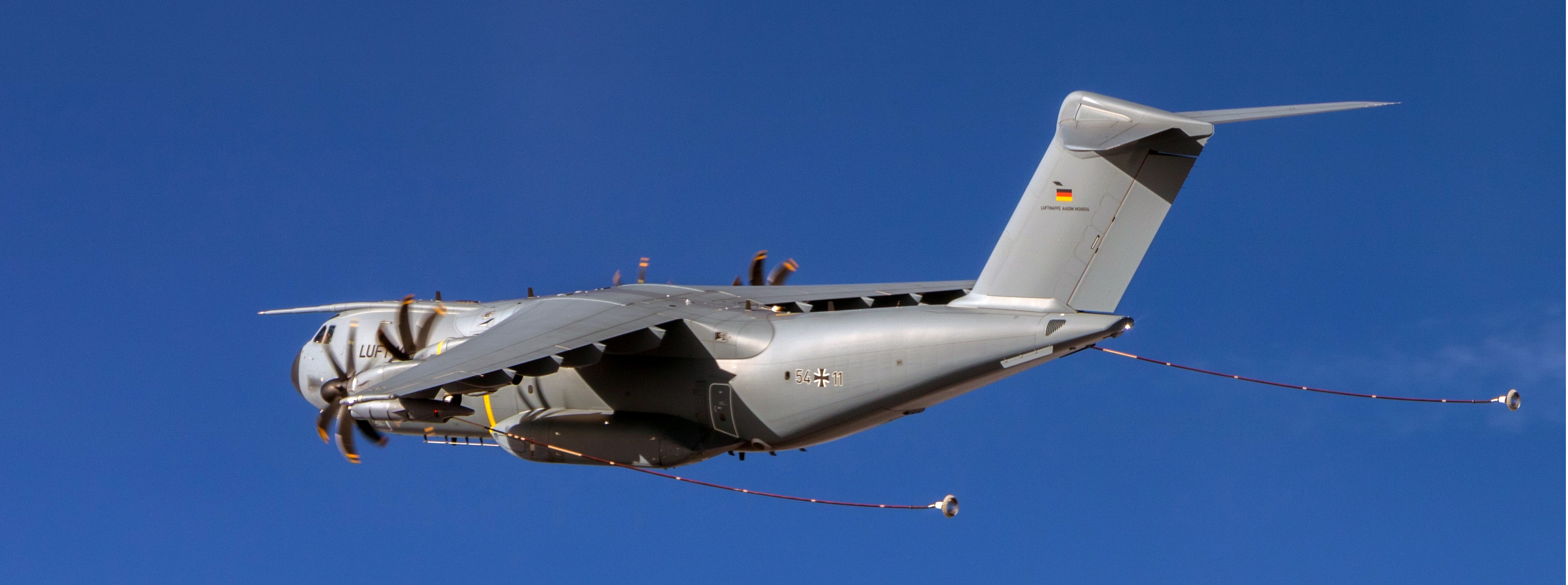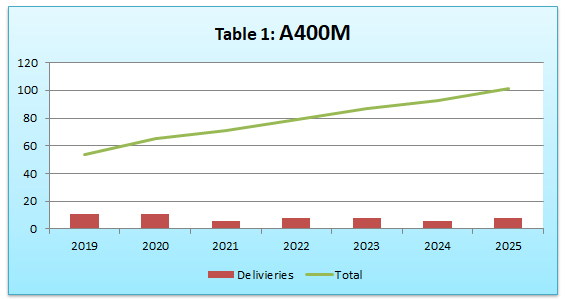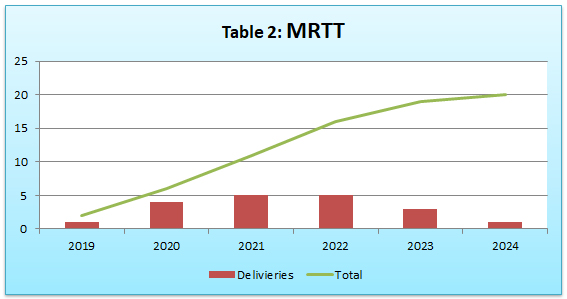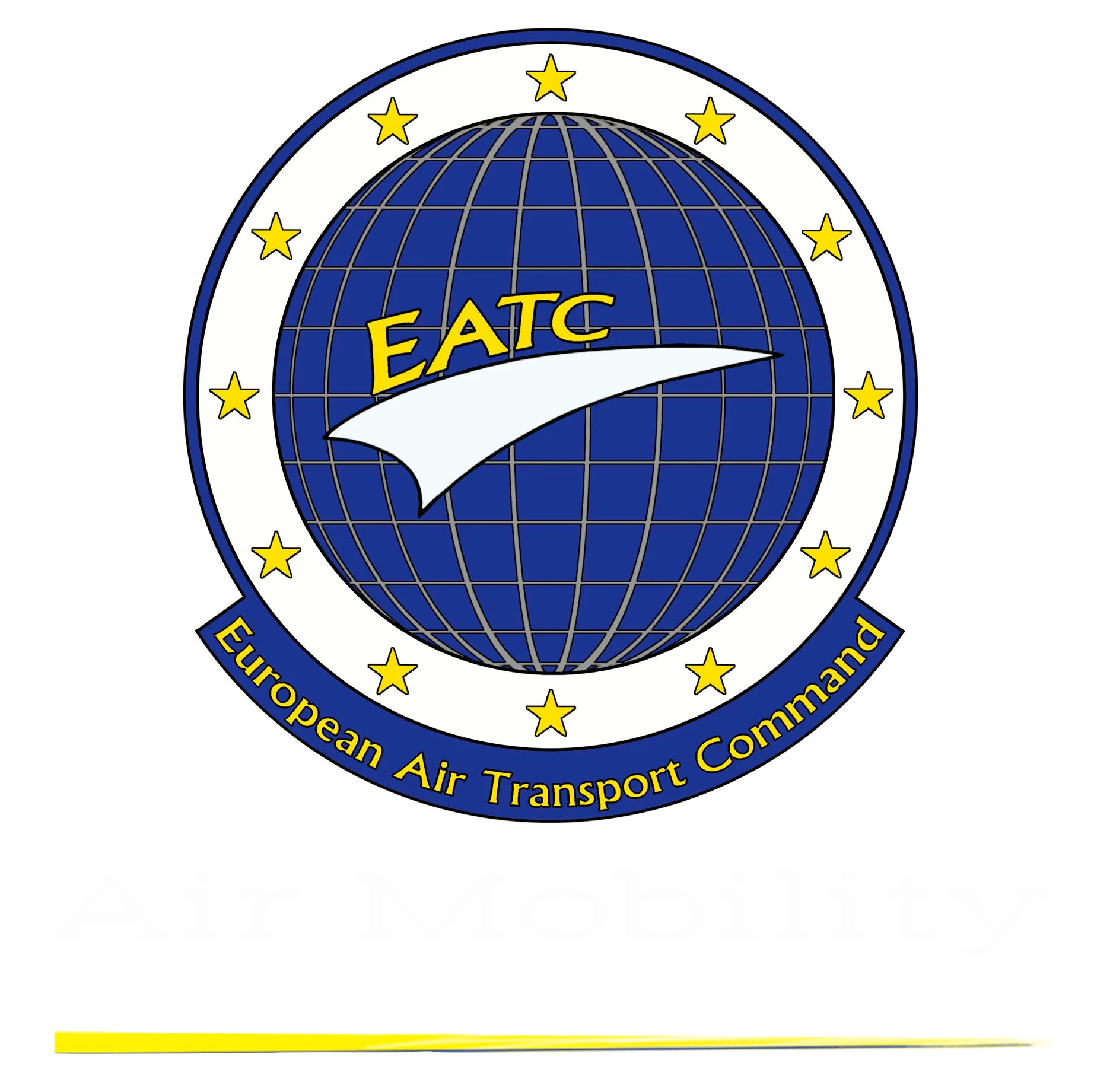Today, EATC commands and controls a diverse multinational fleet of 180 assets comprising 20 different types of aircraft. Over the recent years, the C130G/H and C160 got progressively decommissioned. On the other hand, a new generation fleet* is built up with the A-400M or the C-130J, and with a solid strategic pillar centered on the B767 and the A330 MRTT. These four air assets will constitute a strong and robust backbone of the EATC fleet in the near future.
Quantitative and qualitative increase …
The introduction of the A400M and the A330 MRTT enhances the capabilities of EATC both from a quantitative and a qualitative point of view. The capacity of transport will rise considerably in terms of passengers, payload and volume. At the same time there will be a significant increase in the air-to-air refuelling capacity and the current capacity will be tripled with the ramp up of the A330 MRTT, as well as the use of central units or wing kits on the A400M and the KC-130J.
This goes hand in hand with qualitative upturns. For example : The A400M significantly improves the capability to deliver, faster and further, medium-weight forces, larger equipment and robust cargo. This because of its strategic skills and tactical ability to operate from virtually any unpaved landing zone. Cargo or forces are delivered closer to the location of employment or need. The bottomline is that EATC support nations more effectively and the nations deploy their forces more efficiently.





Multi-mission capability …
The A330 MRTT and the A400M also provide a new real multi-mission capability. Whereas multi-role aircraft can be quickly configured to perform a specific role, a multi-mission asset can carry out more than one role in a single mission. For instant, a A330 MRTT transports German passengers and Dutch cargo from Cologne to Mali. Over the Mediterranean Sea, the aircraft air-to-air refuels French fighters. On the way back, the A330 MRTT boards two Italian heavy injured patients and transports them to Rome.

This transition from multi-role to multi-mission capacity significantly improves EATC’s effectiveness. Of course EATC needs to adapt its operational processes. This is done in the framework of our ongoing internal development to look for synergies and to optimise the employment of available air assets.
Challenges …
Of course new capabilities and the new generation fleet will bring challenges. EATC’s member nations have individual needs and priorities. They plan and design their national fleets according to their national requirements. Connecting these seven custom-made national fleets into one multinational fleet might create a somewhat unbalanced situation.
One example is the lack of outsized cargo capabilities. This presents a double challenge : the shortage of military outsized cargo assets are not compensated by the availability of a civilian outsized capability.
Looking ahead …
EATC will optimise its comprehensive fleet, harmonise and standardise procedures, identify strengths and weaknesses in the global air transport system and advise its member nations on possible and feasible options and solutions. EATC will consolidate the present and prepare the future! Synergy, flexibility and interoperability are key factors to operate effectively and efficiently. Not least as the A400M and the A330 MRTT are game changers.
EATC member nations will need global air mobility to preserve their security. The support and effective projection of forces will be central in their security strategies. EATC will support them daily and continuously in every field of air mobility.
Having the benefit of all its member nations always at heart, EATC remains true to its motto “together we go beyond”.

*While a new generation fleet is being built up, EATC’s fleet will continue to comprise C130H, KDC10, Falcon 900, Casa 235 and 295, contracted medevac assets and a corporate fleet.
A400M – expected delivery and total number

MRTT - delivery and total number

